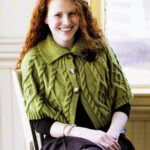Simple textured patterns can be created using a combination of the knit and purl stitch techniques. The type of pattern formed depends on the sequence the stitches take within each row, and how each of the rows is repeated.
Garter stitch is created by working knit or purl stitches every row. It produces a ridged-looking fabric that appears the same on each side.

Stockinette stitch is created by working a knit row, and then a purl row, in repeats. This produces a smooth-looking fabric that is quite flat in appearance on one side.

Seed stitch, or moss stitch as it is also known, is created by working a combination of alternate knit and purl stitches in the same row. However, on subsequent rows the stitches are worked so that they do not match up to the row before. For example, on the next row, a purl stitch sits on top of a knit stitch, and a knit stitch on top of a purl stitch thus creating a check-effect texture.

Rib stitch patterns are created by working knit and purl stitches alternately along the same row. On subsequent rows, matching knit and purl stitches line up on top of each other to form vertical ridges on both sides of the work. Ribs can be in a variety of combinations, either regular or irregular. They are often found at the beginning of a garment, as they have an elastic quality which keeps compact, creating a neat and firm edge to a piece of knitting.
2×2 This rib is created by knitting 2 stitches, then purling 2 stitches, and repeating to the end of the row. These stitches are matched on subsequent rows.

1×1 This rib is created by knitting 1 stitch, then purling the next stitch, and repeating to the end of the row. These stitches are matched on subsequent rows.



